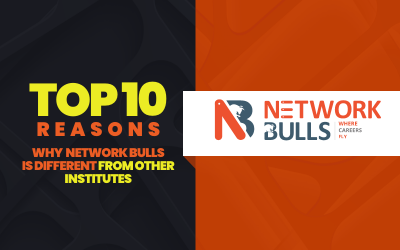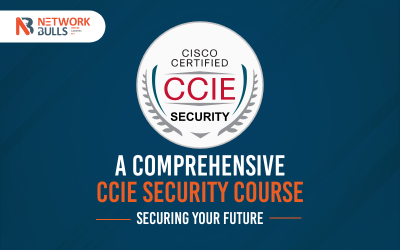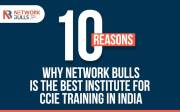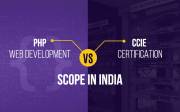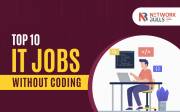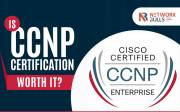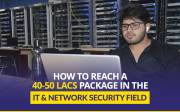Top 20 CCIE Interview Questions and Answers

If you are appearing in the CCIE interview, you must prepare yourself to face the questions, which are quite tough to answer. You must know the trend of questions asked in previous times to be able to answer them perfectly.
If you know the pattern of CCIE interview questions, you can answer with total perfection. It is in your own interest that you regularly go through the CCIE interview Q&A. This can enhance your chances of cracking the exam on your first attempt.
The CCIE interview Q&A offers you a broad overview of the questions likely to be asked. If you know the answers, there is no reason why you cannot crack the exam.
The most frequently asked CCIE interview questions and answering them directly hinge on your success. Due to this reason, the issue of CCIE interview questions and answers becomes very important for you.
To achieve success in your networking career, completing the CCIE course is a must. You can be sure of reaching the top slot in a company’s IT division if you have completed this course.
The best CCIE institute in India
In almost every Indian city, you have several networking training institutes. But not all of them can train you enough to be able to bag the CCIE certification in one attempt. Here, the issue of selecting the best CCIE institute in India comes in.
Due to this reason, it is always advisable that you select an award-winning training institute like Network Bulls. Due to its expert teaching faculty and a well-equipped lab with all Cisco gadgets, the Network Bulls is considered the best CCIE institute in India.
If you are living in the Delhi NCR or planning to relocate, you should take admission in this Gurgaon-based networking training institute to get trained, face the exam, and bag the coveted CCIE certification in the first attempt.
100% job-guaranteed courses
In the networking domain, there are certain courses that offer a 100% job guarantee. Such 100% job guarantee courses offered by the Network Bulls are:
-
CCIE Enterprise Integrated: If you have obtained this certification, you can be sure of bagging a job immediately after getting the Cisco certification.
-
CCIE Security V6 Integrated: If you are pursuing this course, you can be 100% sure of getting a corporate job soon after getting the Cisco certification in this stream.
Top 20 CCIE Interview Questions and Answers
If you are preparing for the CCIE interview, you must know a set of the most asked questions. Knowing these probable questions, you can also prepare their answers.
We are giving below the top 20 CCIE interview questions and answers:
What do you mean by firewall in network security?
Answer: This is an ultra-sophisticated network security device that creates a protection wall in a network between a trusted (or authorised) and a non-trusted (unauthorised) network. A firewall filters the incoming and outgoing traffic of data packets.
Can you explain the operational procedures of Cisco ASA?
Answer: The security levels of Cisco ASA operate in such a technologically pragmatic way that it can understand and estimate the level of trust of a particular network that is attached to a respective interface. Cisco ASA looks at the level of security that can be configured between 0-1000.
What is DMZ?
Answer: The initials DMZ stands for demilitarised zone. DMZ is a separate network behind the firewall, and it permits the user to access some network resources. These resources are web servers or FTP servers available to outside users.
Can you explain a transparent firewall? Why do you need it?
Answer: In a transparent firewall, the ASA acts as a Layer 2 device, like a bridge. It forwards Ethernet frames based on the particular and specific MAC address. We need a transparent firewall as it can be easily inserted into an existing network and may not need address reconfiguration, network policy changes, or a current firewall.
There are certain features that are not supported in transparent mode.What are these features?
Answer: In transparent mode, the following features are not supported:
-
Dynamic routing
-
Multicasting
-
QOS
-
VPNs like IPsec and WebVPN cannot be terminated.
-
ASA cannot act as a DHCP relay agent.
What is unit health monitoring in Failover?
Answer: It is the ASA unit that is used to measure the health of a unit. This process is done by monitoring the failover link, which usually happens when a unit does not receive three continuous ‘hello’ messages on the failover link; it sends hello messages on each interface.
What are the commands that are not replicated in the standby unit?
Answer: All types of copy commands except for #copy running-config startup-config.
All types of the write command except for #write memory.
Can you explain the difference between stateful failover and stateless failover?
Answer: This can be explained in the following manner:
|
Stateful failover |
Stateless failover |
|
|
|
|
What are the various types of ACL in firewalls?
Answer: A firewall has different types of ACLs. They are:
-
Standard ACL
-
Extended ACL
-
Ethertype ACL (transparent firewall)
-
Webtype (SSL VPN)
What are the concepts that are not possible to configure on ASA?
Answer: Following are the concepts that are not possible to configure on ASA:
-
Line VTY
-
Wildcard Mask Concept (this is not present in ASA).
-
Loopback
Which routing protocols are application layer protocols?
Answer: The application layer is the topmost layer of the Open Systems Interconnection (OSI) model, and a user can interact through this layer of the OSI model. The application layer, not an application but a component within an application, is layer 7 at the top of the OSI. The application layer takes care of the communications to other devices.
Can you explain what uRPF is?
Answer: The full form of uRPF is Unicast Reverse Path Forwarding (uRPF). uRPF can be explained in the following way:
-
This uRPF is a device or tool that lowers the forwarding of IP data packets.
-
uRPF takes care of the IP packets that might be copying an address.
-
Besides checking its incoming interface, uRPF also detects the performance of a forwarding table lookup on an IP packet’s source address.
-
It follows RFC 2827 for ingress filtering.
Name the modes of unicast reverse path forwarding.
Answer: There are two modes of unicast RPF:
-
Strict mode
-
Loose mode
Strict mode is the default mode. This means that the switch forwards a packet only if the receiving interface is the best return path.
What is VRF?
Answer: Virtual Routing and Forwarding, commonly known as VRF in its shortened form, is an IP technology that enables users to configure multiple routing tables to co-exist within the same router. The main benefit of VRF is that multiple routing instances are independent and can choose different outgoing interfaces.
How can Open Shortest Path First calculate its metric or cost?
Answer: The Open Shortest Path First (OSPF) uses “cost” as a metric by using a reference bandwidth of 100 Mbps for calculating the cost. For calculating the cost, the OSPF uses the following formula:
Can you explain the functionality of the variable IP-OSPF-Transmit-Delay?
Answer: The delay in transmit can be explained as the expected duration or time needed for OPSFv2 to send link-state update packets to the connected interface. This is due to the fact that the IP-OSPF-Transmit-Delay variable adds a specific time to the age field of an update.
How often does OSPF dispatch LSAs?
Answer: Link-state advertisements are known as LSAs in their shortened form. LSAs are sent out by OSPF when they originate from OSPF itself. There are no fixed timings for this, but OSPF usually sends out LSAs when LSA age reaches link-state refresh time. This link-state refesh time is 1800 seconds.
Can you explain how OSPF uses two multilink paths to transfer packets?
Answer: The Open Shortest Path First, or OSPF, uses the metric cost, which is related to the bandwidth. The OSPF will install both routes in the routing table if there are equal cost paths. In the event of a particular link failing out of multilink, OSPF will not send all the traffic to the second multilink, and in the event that the first multilink reaches 100% of its bandwidth, OSPF will not send any traffic to the second multilink.
What do you know about the debugging capabilities of EIGRP?
Answer: The two debugging capabilities of EIGRP run as follows:
-
Protocol-dependent debug commands
-
Protocol-independent debug commands
What does the EIGRP Stuck in Active (SIA) message?
Answer: According to a protocol that you can trust, any query sent by EIGRP to its neighbours must get a reply within 3 minutes, and if it does not get the required response, it will put the route in SIA state, which will kill the adjacent eighbors. The SIA situation takes place when the route reported by the SIA has disappeared and an EIGRP neighbour denies responding to that route’s query.
Conclusion
If you are appearing in the CCIE exam, you must prepare these questions, among others, to be able to give the right answers. You must prepare thoroughly to answer the questions after knowing their correct answers. For more information, contact Network Bulls at 1800-313-2545.
Also Check
- RECOMMENDED POSTS
-
Trending (0)

-
Network Bulls Placements (53)

-
CCIE (101)

-
CCNP (32)

-
CCNA (40)

-
Awards (14)

-
Network Bulls Reviews (53)

-
Informational Articles (74)

-
Technical Articles (26)

-
CCIE Success Stories (40)

-
Summer Training Courses (5)

-
CCIE Security Version 5 (34)

-
CCIE Data Center (19)

-
MCSE (3)

-
Industrial Training (10)

-
Microsoft Certification (3)

-
Ask NB (7)

-
Network Bulls Offers (6)

-
Best Institute for CCIE Training in India (118)

-
CCIE Training Courses (78)

-
DHCP (2)

-
Webinars (6)

-
Training (128)







